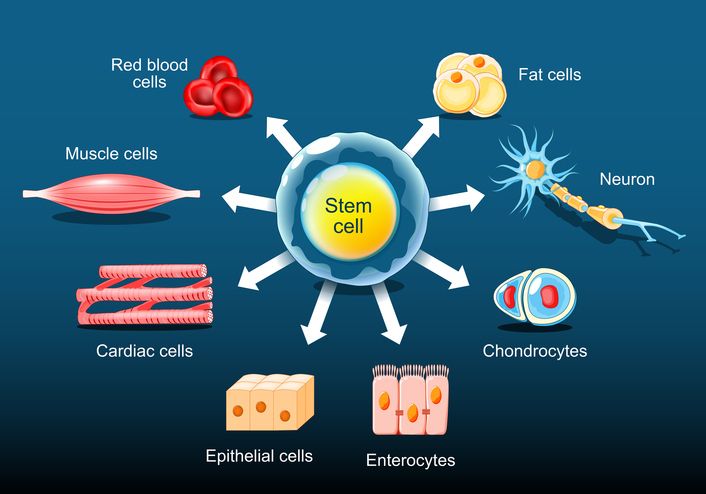Author: Natalie Ng|Updated: 6 June 2025
What you eat shows up on your skin more than you might expect. If you're dealing with acne, switching to a low glycemic diet could be worth considering. This method focuses on foods that help keep your blood sugar steady, which may reduce breakouts over time. Diets high in refined carbs like white bread, sweet snacks, and soft drinks can lead to blood sugar spikes. That kind of pattern may increase hormones like insulin and insulin-like growth factor, which are known to affect oil production and skin inflammation. This is why a high glycemic load diet is often linked to more frequent or severe acne. On the other hand, a low glycemic diet encourages slower, more stable changes in blood sugar. Research has found that people who follow a low GI diet often see noticeable improvements in their skin. Some even need less acne medication over time. It’s not just about avoiding high GI foods—adding the right ones matters too. Low glycemic foods like lentils, sweet potatoes, and leafy greens can help support clearer skin without triggering breakouts. Wondering where to start? The next section covers 8 low GI foods that may help reduce acne breakouts—and why they’re worth adding to your meals.

Low GI Food for Acne Reduction 1: Quinoa and Its Benefits for Acne-Prone Skin
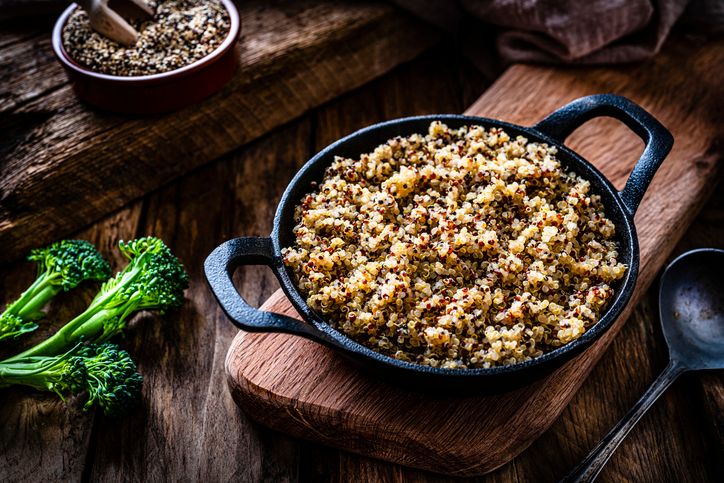
Quinoa helps reduce blood sugar spikes
While many grains can spike your blood sugar and potentially trigger acne, quinoa stands out as a skin-friendly alternative with its low glycemic index of 53. This ancient grain supports a low glycemic diet for acne by helping to prevent sharp rises in insulin and insulin-like growth factor, both of which may increase oil production and worsen acne. In contrast, high GI grains—those with a glycemic index of 70 or more—can rapidly raise blood sugar and insulin levels, potentially worsening acne symptoms.
Quinoa offers fiber and protein that support skin health
Quinoa is also packed with fiber and protein, which slow digestion and help keep blood glucose stable. This helps reduce the chance of blood sugar spikes that may contribute to acne pathogenesis. Its nutrient profile makes it a strong choice for those following a low glycemic load diet or managing acne vulgaris linked to dietary triggers. Including quinoa in a low glycemic diet may also help improve biochemical parameters associated with acne severity.
Quinoa is easy to include in daily meals
Simply swap out your regular rice or pasta with 1/2 cup of cooked quinoa at meals. For the best results, rinse it thoroughly until the water runs clear, then cook one part quinoa with two parts water for about 15 minutes. To make it even more skin-friendly, try pairing it with steamed vegetables and lean proteins. Quinoa’s versatility fits well into a low GI diet and supports efforts to improve acne severity through food choices.

Low GI Food for Acne Reduction 2: Sweet Potatoes vs. Regular Potatoes for Acne Control
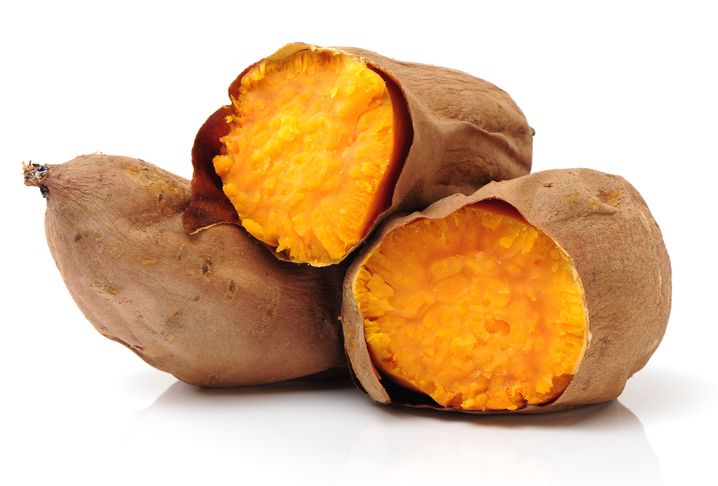
Sweet potatoes support low glycemic diets for acne
When it comes to acne and blood sugar, not all starchy vegetables are equal. Sweet potatoes have a much lower glycemic index—around 44—compared to white potatoes, which can reach a GI of 89. That means sweet potatoes are far less likely to cause the kind of blood sugar spikes that may trigger acne or worsen breakouts.
Regular potatoes have a higher GI, which may make them more likely to contribute to acne breakouts.
Rich in vitamin A and fiber for skin health
Sweet potatoes also offer skin-supportive nutrients like vitamin A, which plays a role in regulating skin cell turnover. Their fiber content helps control blood glucose and supports a low glycemic load diet. Together, these nutrients may help reduce acne severity by minimizing excess oil and promoting a clearer complexion.
Simple ways to swap sweet potatoes into meals
For the best results, avoid frying. Try mashed sweet potatoes as a replacement for mashed white potatoes, or make baked sweet potato wedges with a pinch of cinnamon. These options fit well into a low glycemic index diet and may help reduce the need for acne medication over time.
Book Now to Experience
Acne Treatment
1 Minute Self-Registration
Date should not be before minimal date

Low GI Food for Acne Reduction 3: Dark Leafy Greens and Acne-Related Hormones
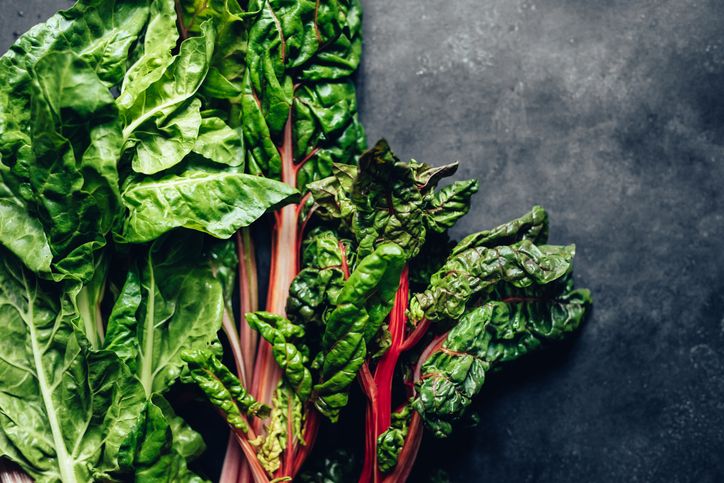
Leafy greens support low glycemic diets without triggering breakouts
Dark leafy greens like spinach, Swiss chard, and kale are low glycemic foods that don’t raise blood sugar quickly, making them a smart choice for acne-prone skin. Acne occurs more frequently in individuals with hormonal imbalances, and consuming leafy greens may help support hormonal balance. They fit well into a low glycemic load diet and don’t contribute to the blood sugar spikes that may trigger acne.
Greens contain key minerals like zinc
Some dark leafy greens provide moderate amounts of zinc, which supports oil regulation and may help with healing. Swiss chard, spinach, and collard greens offer zinc levels between 1.9 to 3.5mg per cup. While not the richest sources, they contribute to your daily intake when combined with other zinc-containing foods.
Anti-inflammatory compounds in greens support overall skin health
Leafy greens are rich in antioxidants and plant compounds that may help reduce skin inflammation, a factor often involved in acne vulgaris. Though they don't directly control hormones or oil production, including greens regularly in meals—raw, sautéed, or blended—adds variety and nutrient density to your acne-friendly diet. Aim for at least two cups daily as part of your routine.

Low GI Food for Acne Reduction 4: Lentils as a Skin-Friendly Protein Source
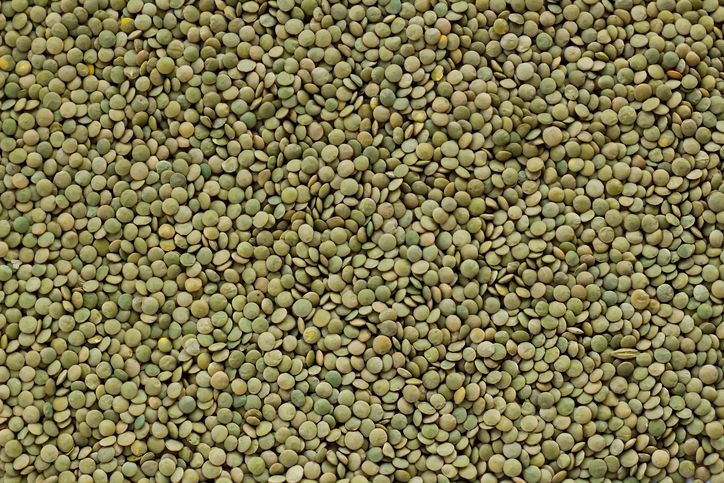
Lentils help stabilize blood sugar
Lentils are a low glycemic food with a GI of around 20, making them a smart option for those managing acne through diet. Unlike high glycemic foods such as white rice or white bread, lentils digest slowly and help prevent blood sugar spikes that can worsen acne.
A balanced source of plant-based protein
Each ½ cup serving of cooked lentils provides about 9 grams of protein and 8 grams of fiber. This combination helps maintain stable insulin levels and supports a low glycemic diet for acne. Stable blood sugar may reduce the overproduction of skin oils and support clearer skin over time.
Modest zinc content with better absorption when soaked
Lentils contain around 2.5mg of zinc per cup. While this isn't high compared to other sources, soaking lentils before cooking helps improve zinc absorption. Pairing them with vitamin C-rich ingredients like lemon juice or tomatoes can also help your body make better use of the zinc they offer.
Anti-inflammatory benefits from fiber
The fiber in lentils supports gut health, which can influence overall inflammation. It also helps the body eliminate excess hormones and toxins that may play a role in acne pathogenesis. Including at least ½ cup of lentils in your daily meals—whether in soups, salads, or veggie patties—can support skin health from within.
Book Now to Experience
Acne Treatment
1 Minute Self-Registration
Date should not be before minimal date

Low GI Food for Acne Reduction 5: Steel-Cut Oats For Clearer Skin

Steel-cut oats support stable blood sugar levels
Steel-cut oats have a glycemic index of around 55, making them a better breakfast choice than processed cereals or white toast. By avoiding blood sugar spikes, they help reduce insulin-like growth factor levels that may contribute to acne development and oil overproduction.
Maintaining stable blood sugar with steel-cut oats may also help reduce skin surface triglycerides, which are linked to acne severity.
High fiber content benefits skin and hormone regulation
A ¼ cup serving of dry steel-cut oats contains about 5 grams of fiber. This helps slow down digestion and keeps blood glucose levels steady, supporting a low glycemic index diet. Stable insulin levels reduce pressure on sebaceous glands, which are often overstimulated in those with acne vulgaris.
Research has demonstrated a clinical and histological effect on skin health when individuals adopt a low glycemic diet, such as one including steel-cut oats.
Simple prep for a skin-friendly meal
Cook ¼ cup of steel-cut oats with 1 cup of water for about 20–25 minutes until they reach a creamy texture. To enhance their anti-inflammatory properties, add a sprinkle of cinnamon and top with berries. These ingredients all support skin health and make your breakfast more balanced without raising the glycemic load.

Low GI Food for Acne Reduction 6: Salmon for Acne Reduction

Rich in omega-3s to reduce inflammation
Wild-caught salmon is packed with omega-3 fatty acids, which help calm inflammation that contributes to acne breakouts. These healthy fats support the skin’s barrier and may reduce redness and irritation, especially in those with acne vulgaris.
Supports hormone balance and oil regulation
Salmon also provides zinc, a mineral linked to hormone regulation and skin healing. Regular intake may help reduce excess oil production and support your skin’s recovery process, leading to fewer and less severe breakouts over time.
Skin-friendly way to boost nutrients
A 4–6 ounce portion of wild-caught salmon, eaten twice a week, fits into a low glycemic diet for acne. Baking or grilling preserves its nutrients. Pairing it with vegetables like spinach or sweet potatoes makes it a skin-supportive meal that won’t spike blood sugar.
Book Now to Experience
Acne Treatment
1 Minute Self-Registration
Date should not be before minimal date

Low GI Food for Acne Reduction 7: Chia Seeds for Clearer Skin and Blood Sugar Control
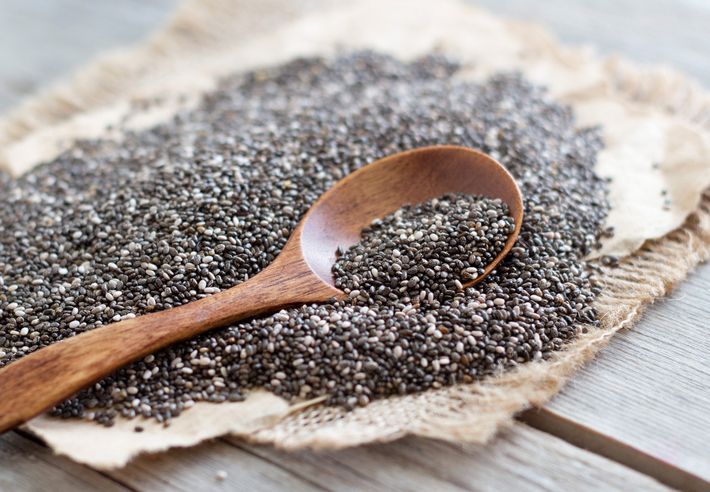
Anti-inflammatory fats support acne-prone skin
Chia seeds are rich in plant-based omega-3 fatty acids, which help reduce inflammation linked to acne vulgaris. These healthy fats support skin barrier function and may calm breakouts without contributing to excess oil production. Their anti-inflammatory effect fits well into a low glycemic diet for acne and may reduce the need for acne medication over time.
Chia seeds help regulate blood sugar
With a glycemic index close to zero, chia seeds won’t trigger blood sugar spikes. They absorb liquid and form a gel-like consistency, which slows digestion and helps stabilize blood glucose. This makes them ideal for low glycemic load diets aimed at reducing acne severity and improving skin health.
Easy to add to acne-friendly meals
Chia seeds are simple to work into your diet. Mix 1–2 tablespoons into smoothies, oatmeal, or yogurt. You can also prepare chia pudding by combining 3 tablespoons of chia seeds with 1 cup of coconut milk or another plant-based milk. Let it sit overnight in the fridge for a skin-friendly snack that supports blood sugar balance.

Low GI Food for Acne Reduction 8: Greek Yogurt and Its Role in Acne Management
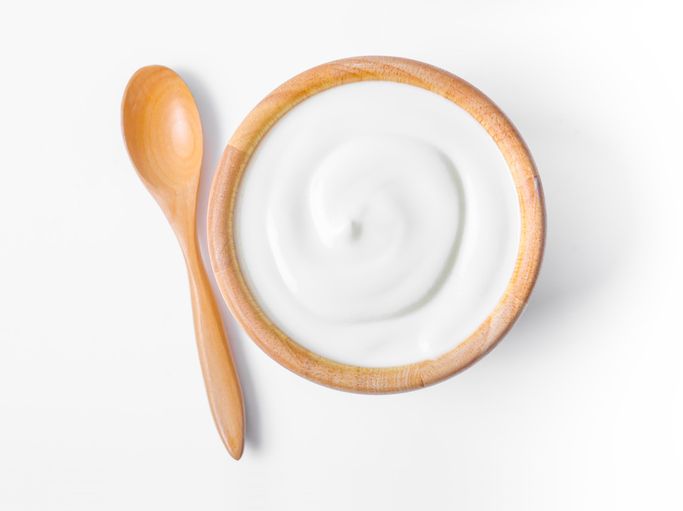
High in protein without raising blood sugar
Greek yogurt has a low glycemic impact, which helps maintain steady blood sugar levels. This is important in reducing insulin-related triggers that can lead to excess oil production and acne breakouts. Its high protein content also supports a low glycemic load diet for acne.
Probiotics support skin and gut health
Greek yogurt contains live active cultures, including Lactobacillus and Bifidobacterium, which may help support gut health. A balanced gut microbiome can reduce systemic inflammation, which plays a role in acne pathogenesis. Probiotics may also improve the skin’s natural barrier and reduce the frequency of breakouts.
How to include it in an acne-friendly routine
Choose plain, unsweetened Greek yogurt with at least 15g of protein per serving. Enjoy it as a breakfast or snack, and pair it with low GI fruits like berries. Including one cup daily can help support skin health and fits well into a low glycemic index diet.
Book Now to Experience
Acne Treatment
1 Minute Self-Registration
Date should not be before minimal date

Lifestyle For Clearer Skin: Regular Meal Timing and Blood Sugar Control

Irregular eating may increase acne severity
Meal timing often gets overlooked in acne management, but it plays a direct role in how your body handles blood sugar and insulin. Skipping meals or eating infrequently can cause rapid blood sugar fluctuations. These spikes lead to increased secretion of insulin and insulin-like growth factor (IGF-1), both of which have been linked to higher sebum production, clogged pores, and inflammation. These changes are all known contributors to acne pathogenesis.
Several studies have found that participants assigned to a low GI diet group experienced significant improvements in acne severity compared to control groups.
Studies show that insulin resistance is more common in individuals with moderate to severe acne. A randomized controlled trial involving low glycemic index diet groups demonstrated a significant improvement in acne severity when blood sugar levels were stabilized through structured eating habits. This connection reinforces the importance of when—not just what—you eat.
Regular meals reduce hormonal shifts and support clearer skin
Maintaining a steady eating schedule helps prevent the highs and lows of blood glucose that can stress the endocrine system. When meals are spaced out evenly—ideally every 4 to 5 hours—the body is better able to manage insulin output. This reduces the hormonal triggers that can lead to breakouts, especially in teenage acne and adult acne cases linked to dietary patterns.
Structured eating can also reduce reliance on high glycemic snacks or processed foods, which are common fallback options during long fasting periods. These refined foods—often high in white flour, added sugars, and low in fiber—can rapidly increase the glycemic load and exacerbate acne. Regular meal timing and following a low glycemic diet can result in fewer acne breakouts.
Meal timing improves low glycemic diet outcomes
A low glycemic load diet becomes even more effective when combined with regular meal timing. The consistent intake of energy, paired with slow-digesting carbs, lean protein, and healthy fats, supports skin healing and helps reduce the risk of inflammatory flare-ups. It also helps maintain lower levels of growth hormone and insulin-like growth factor, both of which can affect sebaceous glands and lead to acne vulgaris.
This approach is especially helpful for those dealing with adult acne or recurring breakouts that don’t fully respond to topical acne treatment or less acne medication. By controlling not just what you eat but when, the skin benefits from more stable internal conditions. Clinical studies, including randomized controlled trials, have shown that a low glycaemic load diet, when paired with regular meal timing, can improve skin health and reduce acne.
Practical ways to build a regular eating routine
• Start your day with a low GI breakfast within 1 hour of waking. Greek yogurt with berries, steel-cut oats with almond butter, or chia pudding with coconut milk are all skin-friendly choices.
• Include lower GI foods in each meal to help manage blood sugar and support clearer skin.
• Avoid long gaps between meals—aim to eat every 4 to 5 hours, including a small low GI snack if needed.
• Combine protein, fiber, and healthy fats in each meal to slow carbohydrate absorption and reduce blood sugar spikes.
• Plan meals to avoid emergency eating or fast food, which is often high in refined carbs and worsens insulin resistance.
• If you’re active or use protein calorie supplements, pair them with low GI foods like lentils or whole grains to reduce the glycemic load.
Eating on a regular schedule complements a low glycemic diet for acne and helps limit the impact of insulin-related changes on the skin. It supports overall skin health and can reduce the frequency of acne breakouts in both short-term and long-term cases.

Professional Support for Acne: How Acne Treatment Complements a Low Glycemic Diet
Supporting clearer skin beyond diet
A low glycemic diet helps reduce acne by minimizing blood sugar spikes and calming hormonal activity linked to sebum production. But while it can improve internal factors, external symptoms—like clogged pores, inflammation, and acne scars—often need additional support. That’s where professional acne treatments can help fill the gap. Research published in J Am Acad Dermatol has shown that dietary interventions, particularly low glycemic index diets, can significantly reduce acne severity.
How Acne Treatment works
New Beauty’s Acne Treatment targets surface-level causes of acne that diet alone may not address. The treatment begins with dual spiral suction and drainage technology to exfoliate dead skin cells and remove dirt, excess oil, and buildup from the pores. This helps calm inflamed skin and reduce infection.
Next, a medical-grade hydrating serum is infused into the skin. This step restores moisture, calms overactive sebaceous glands, and supports collagen production—helping reduce acne scarring and dullness while preventing future breakouts.
Why Acne Treatment enhances low GI diet results
By pairing the skin-calming effects of a low glycemic index diet with targeted pore cleansing and hydration, you get a more complete approach to managing acne vulgaris. This combination can reduce the need for acne medication, lessen inflammation, and support long-term improvement in acne severity. The treatment is non-invasive and suitable for individuals with moderate to severe acne, blackheads, whiteheads, and acne scars. Clinical studies have shown that low GI diets can reduce acne severity and improve skin health.
Want clearer, smoother skin that goes beyond diet? Book your Acne Treatment consultation today and start seeing visible changes.
New Beauty's Acne TreatmentBook Now to Experience
Acne Treatment
1 Minute Self-Registration
Date should not be before minimal date
FAQ
1. Can a low glycemic diet help with hormonal acne?
Yes, a low glycemic diet may help reduce hormonal acne by minimizing blood sugar spikes and insulin resistance, both of which influence hormone levels like insulin-like growth factor (IGF-1). Elevated IGF-1 can overstimulate sebaceous glands and worsen acne. By choosing low GI foods, you can help stabilize hormones that contribute to breakouts, particularly in adult and teenage acne.
2. Is dairy always bad for acne, or are some options better than others?
Increased milk consumption, especially skim milk, has been linked in some studies to a higher risk of developing acne. This may be due to hormones present in milk or the way it affects insulin levels. Full-fat dairy products tend to have a lower glycemic impact, but if you're managing acne, switching to non-dairy alternatives like coconut milk or almond milk may be helpful. It's not just the dairy, but how it fits into your overall glycemic load that matters.
3. How does whey protein affect acne?
Whey protein has been associated with acne in several studies. It can raise insulin and IGF-1 levels, which may trigger acne in people prone to breakouts. If you’re following a low glycemic load diet for acne, you may want to avoid whey protein supplements and opt for plant-based protein sources like lentils or chia seeds, which have less impact on blood sugar and skin inflammation.
4. Can fruit juice trigger acne even if it's natural?
Yes, even 100% natural fruit juice can have a high glycemic index and cause blood sugar spikes. Unlike whole fruits, juice lacks fiber, which helps slow down sugar absorption. Frequent intake of fruit juice can contribute to insulin resistance and may exacerbate acne. For better skin health, it's recommended to eat whole fruits and avoid sugary beverages, even if they’re labeled as “natural.”
5. What is the difference between a low glycemic diet and a low carb diet for acne?
A low glycemic diet focuses on eating carbohydrates that don’t raise blood sugar quickly, while a low carb diet limits total carbohydrate intake altogether. You don’t need to cut all carbs to manage acne—just avoid high glycemic index foods like white bread, refined snacks, and sweetened beverages. A low glycemic index diet is more sustainable and still allows for healthy carbs like whole grains, legumes, and sweet potatoes that support skin health without worsening acne.
Recommended Articles
COPYRIGHT© NEW BEAUTY MANAGEMENT LIMITED 2025. ALL RIGHT RESERVED.


